The extremely elongated island of São Jorge is one of the less touristy islands of the Azores, but it offers, among other things, amazing viewpoints of the surrounding islands.
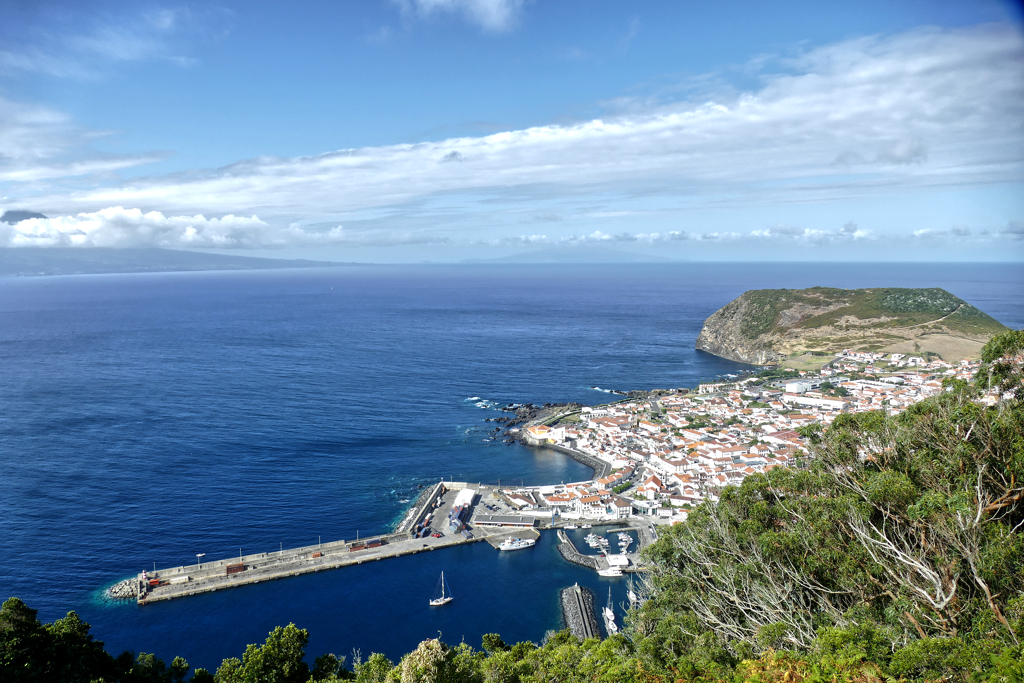
Your Trip Has Been Canceled
It’s around 9 in the morning when my cell phone rings. An unknown number. I know a lot of people who don’t answer when they get a call from an unknown number. I do. If I find something suspicious, I can always hang up. And especially on my trip across the Azores, it is essential that I answer, because it could be a tour operator or a host. In this case, it turns out to be Atlânticoline, the main ferry company of the Azores. No, unfortunately, I didn’t win a free ride. They kindly inform me that, for safety reasons, they are canceling the evening ferry that was supposed to take me from Graciosa to São Jorge. I now have the choice of getting my money back or leaving in three days.
In three days?
Are you kidding me?
This is my third day on Graciosa, a pretty yet very small island with very little to do.
I want to leave.
I want to go to São Jorge, where a booked and pre-paid hotel room is waiting for me.
But for today, that ship sailed.
Sadly, not in the literal sense.
Yes, please refund me the money.
São Jorge
This little mishap is the reason why, in the end, I had only one single day in São Jorge. Of course, that’s far too little, and I only get a small impression of the fourth largest of the Azores.
São Jorge is part of the central group of the Azores and is nestled between Graciosa and Terceira in the north, Faial in the west, and Pico in the south. Due to this privileged location, you can enjoy wonderful views of the neighboring islands from basically every spot.

Interestingly, although São Jorge, like the other islands of the Azores, is of volcanic origin, there is no caldera. Instead, the island prides itself on having around 75 so-called fajãs. Landslides or lava flows created these coastal plains at the foot of high cliffs. In the past, many of these fajãs were inhabited and used for agriculture. After an earthquake in 1980, many buildings were abandoned. Nevertheless, today, Fajã da Caldeira de Santo Cristo and Fajã dos Cubres are two remaining gorgeous examples, featuring lush greenery, tidal pools, and traditional farming areas. Most importantly, they offer excellent hiking trails and scenic views, making them popular among outdoor enthusiasts. Yet, although São Jorge is ideal for a hiking holiday, the island is less developed for tourism than most of the other Azores islands.
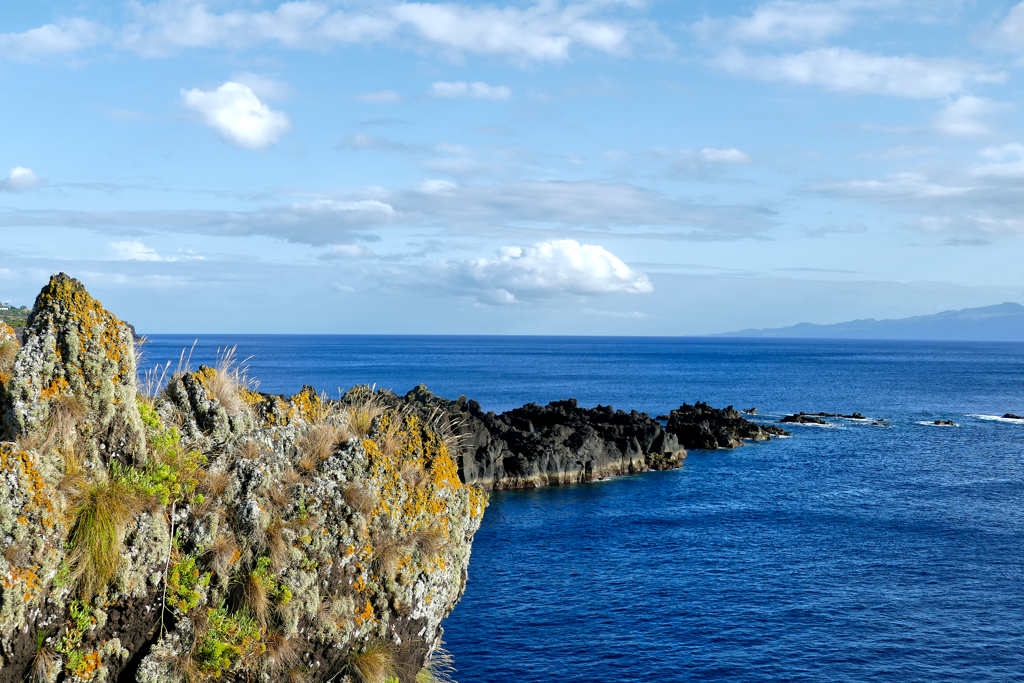
Many people in São Jorge still live from agriculture. Mainly wheat and wine are grown, but São Jorge also has a coffee plantation!
Also, the island is particularly famous for its outstanding cheese.
Velas And Beyond
Velas, the main town and administrative center of São Jorge, is said to be the perfect introduction to the island. It combines stunning landscapes with traditional architecture. I would also like to add that Velas is very conveniently located near the airport and the port, so you don’t waste time on long journeys to and from the airport.

As soon as I had put my suitcases down, I was able to walk off, enjoy the beautiful surroundings, admire the laid-back atmosphere and pretty architecture of the center, and enjoy a typical and inexpensive lunch. I then spent the afternoon in the lava bathing establishment with a view of the neighboring islands of Pico and Faial. I think you can’t get more joy out of 24 hours, or what do you think?
As a matter of fact, Velas retains a quiet and authentic island vibe that distinguishes it from the busier tourist destinations in the archipelago. The town’s small size has an intimate, welcoming feel to it.
Entre Morros
I had limited time and I didn’t have my own vehicle. Nevertheless, first and foremost I wanted to see the breathtaking nature that São Jorge is famous for. Luckily, there is an absolutely gorgeous formation just a few minutes walk north of town. Entre Morros is a bay between two very differently formed hills.

The lush green of the plants and the deep black of the lava rock contrast wonderfully with the rich blue of the seawater. And if that’s not enough overwhelming beauty for you, you’ll certainly be able to enjoy the sight of the islands of Faial and Pico emerging on the horizon.

While the Miradouro Entre Morros is located a little north of the center, Velas itself also impresses with classic Azorean architecture. Whitewashed buildings with red-tiled roofs line charming cobblestone streets. Traditional Portuguese-style facades give Velas a picturesque and historical atmosphere. The main square, Praça da República, is an idyllic place surrounded by shops and cafes of all kinds.
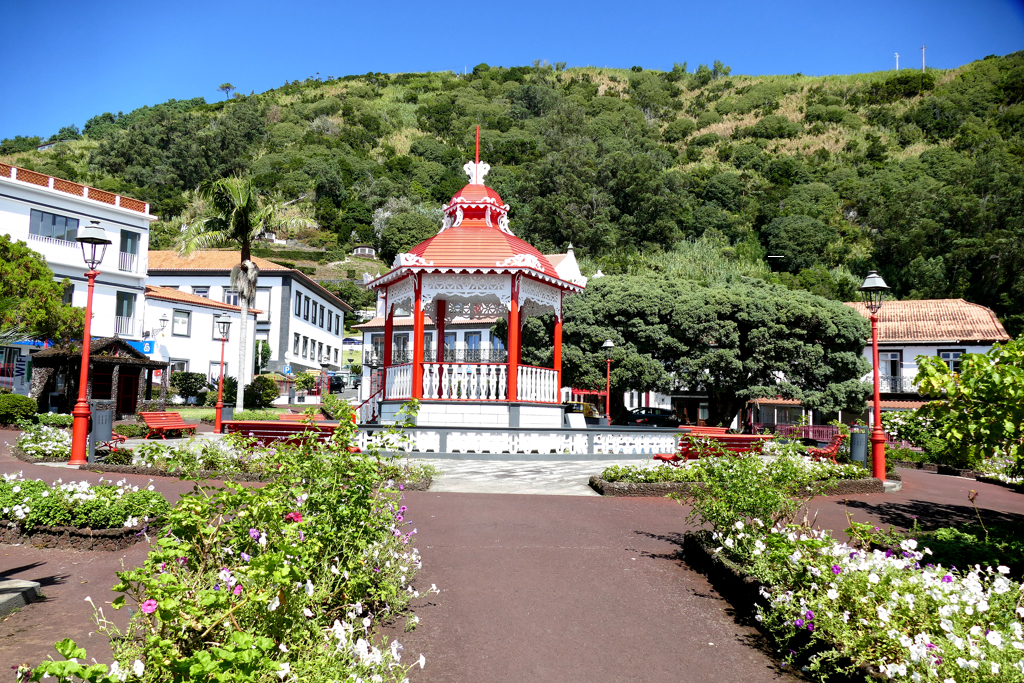
São Jorge is known for its cheese, and Velas has several shops and local dairies where visitors can taste and purchase it. There are also cheese-tasting tours where you can learn more about traditional production methods and taste different types and levels of ripeness.

At the end of the traffic-calmed Rua Maestro Francisco Lacerda stands the striking 17th-century Igreja Matriz de São Jorge, the main church of Velas, with its beautiful blue and white tile work.
On the Waterfront
Behind the church square lies Velas’ beautiful natural harbor. It is surrounded by cliffs and offers breathtaking views, especially of course at sunrise and sunset. This makes the harbor both a functional harbor and a picturesque landmark with fishing boats and yachts. Ferry services connect São Jorge with nearby islands such as Pico and Faial.
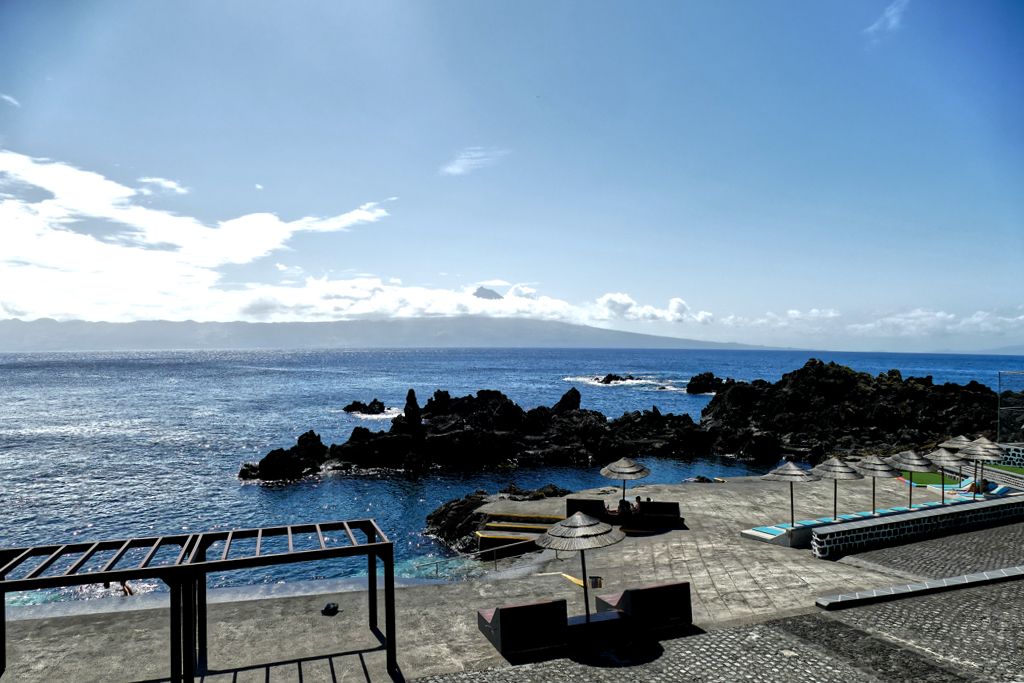
The picturesque waterfront promenade runs towards the southeast, perfect for a leisurely stroll with wonderful sea views.

After a few minutes, you will reach Poça dos Frades. Here, the city has installed a functional, very safe, and at the same time quite a chic bathing establishment around natural pools formed from lava. You can find a place in the shade under one of the permanently installed parasols and relax on a comfortable’n’cool lounger. You climb into the seawater pool, which is protected from high waves by the lava walls, using various safe stairs.

Sunset at the Apneia Bar
The day is coming to an end and, despite all the odds, I am very satisfied. I saw a lot of beautiful things and lay lazily in the sun and wondered whether the veiled clouds would reveal a little more of Pico’s tip on the opposite island of the same name.
You have the capacity to deal with really odd questions when you don’t have real concerns in this world.

Above the Poça dos Frades is a piece of wall that may have once belonged to a fortress. In any case, there is now a rustic bar there. You sit at small tables along the wall, your gaze fixed on the sea in the hope of spotting a few dolphins to top off the day. I peek and peer and can’t see. However, I have to admit that I am now pleasantly dizzy from the white wine that was poured very generously.

Let’s hear it for São Jorge!
Practical Information
How to Get There
By Plane
São Jorge Airport is located in the municipality of Santo Amaro, on the edge of Fajã da Queimada on the south coast, just six kilometers southeast of Velas. From here, SATA Air Açores connects São Jorge with the other Azores, most importantly with Terceira. From there, you can take connecting flights to all other islands as well as to mainland Portugal and even the USA.

As on all other islands, taxis have fixed prices. The trip to Velas costs less than 10 €uros.
By Ferry
Don’t let my personal little mishap scare you off: ferries offer a scenic and often inexpensive way to travel between the Azores. This mostly works very well, especially within the central archipelago, as the islands there are close to each other. Yet, if you are flexible and willing to adapt to seasonal schedules, you can basically travel to all the islands by sea. Especially from June to September, the connections are more frequent and most islands are served daily. However, it is advisable to book ferry tickets in advance, especially during these months, as ferries are often fully booked.

But always remember that ferry connections are heavily dependent on the weather. In autumn and winter, trips can be canceled at short notice due to strong winds or high waves.
I can tell you a thing or two about it.
It is advisable to find out about the current departure times shortly before the start of your trip. Atlânticoline provides current timetables and booking options on their website.
Also, they will call you if your ferry can’t dock, trust me.
How to Get Around
Public transportation in São Jorge is available but very limited. In addition, buses run in a circular pattern. This means they drive through different towns and finally return to their starting point. This actually works in your favor if you are planning to see the island on a public bus tour.
At 3.30 p.m., public bus LS-1A leaves Velas and goes along the south coast to Relvinha where you have a pit stop of half an hour before you take the next bus LN-2 up north towards Norte Pequeno. From there, the bus continues along the north coast and turns south again at the Terreiro da Macela so that it reaches Velas at 6.30 p.m.
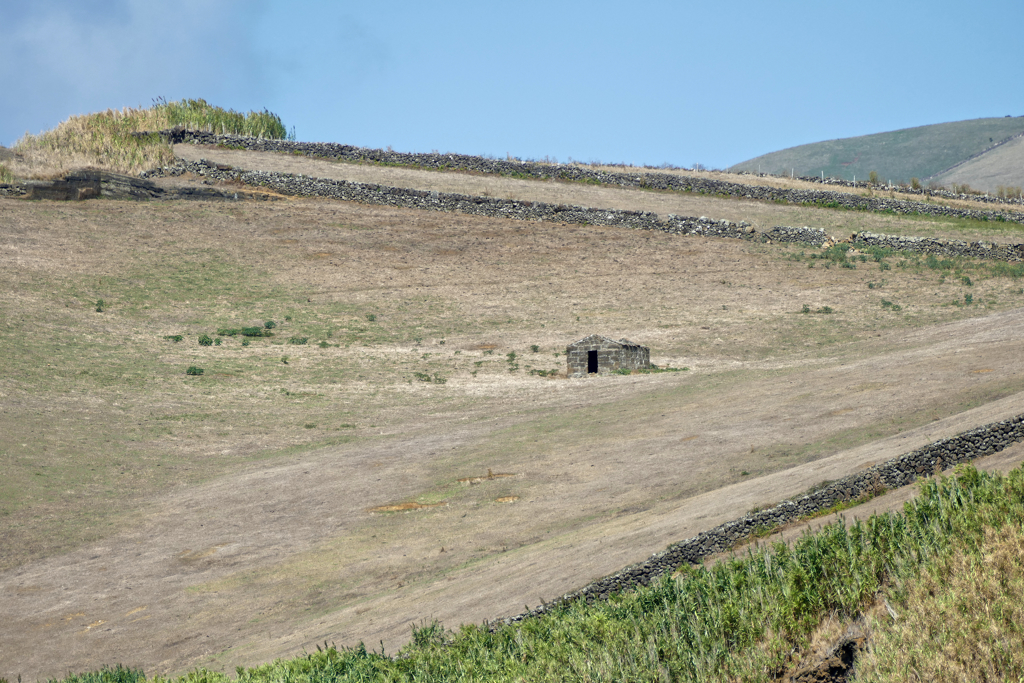
On this page, you’ll find all the schedules to help you design your itinerary. Also, you can verify all connections on Google Maps.
The trip is relaxed, and you get to see a lot of the island. The big disadvantage is that you have almost no opportunity to make a longer stop to take a closer look at a particularly beautiful area.
But remember that it’s possible to explore parts of the island by hiking, so this, in combination with a bus tour, might be a great option. Also, remember that São Jorge is quite small. Hence, if you get lost and need a cab to pick you up somewhere, it won’t break the bank. Just make sure to have a cab driver’s phone number with you.
Obviously, you can also rent a bike and explore the island by cycling. However, I wouldn’t be too euphoric about it as the island is quite hilly. You need very good brakes when going downhill and very strong calves when the road winds up.
Organized Trips
Despite being Portuguese territory and therefore part of Europe, a continent that can be proud of its public transport networks, the situation regarding public transport in the Azores is deplorable. Relatively few routes are served and sometimes only once a day. Sundays are a complete day of rest on most islands. It’s hopeless.
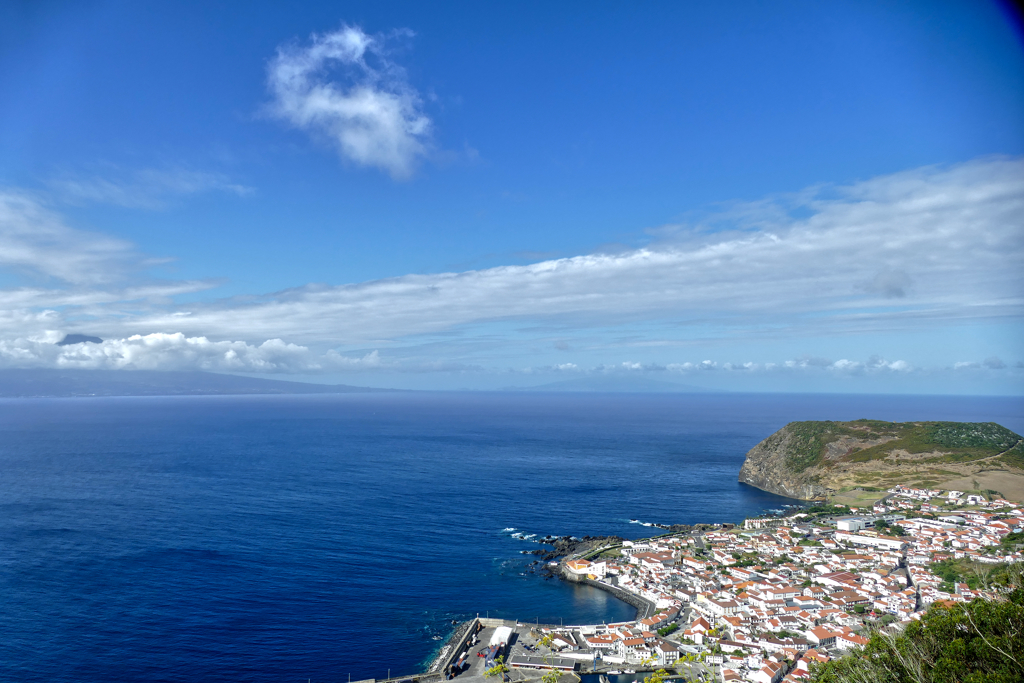
So if you don’t rent your own vehicle and don’t want to spend hours figuring out complicated connections, it’s best to join an organized day trip. But don’t be surprised if you find organized day tours of São Jorge a bit pricey. The island is touristically not as developed as, for instance, São Miguel. Therefore, fewer visitors are participating in organized trips, which makes them far more private and enjoyable but also more expensive.
However, while in the past, I mainly joined organized day trips from time to time when there was no convenient public transport option, I now do it for safety reasons. Believe me, you do not want to sit by yourself in the wilderness with no opportunity to call for assistance as I did during a hiking accident in Gran Canaria. Therefore, take at least a hiking buddy with you, especially when exploring impassable and rough terrain.
Or, even better, go with a knowledgeable local guide.
No matter your reason for wanting to join an organized excursion, here are some great options for exploring São Jorge on guided tours*:
Where to Stay
Since the Azores are still rather destinations for true connoisseurs, you’ll find a much smaller choice of lodging options than on other European islands such as the Canaries. While there are even some of those charmless big hotels in São Miguel, on the smaller islands, accommodation is somewhat limited. Therefore, I recommend early booking, especially if your budget has a certain limit.
As the island of São Jorge is touristically even less developed than some of the other isles, the choice of lodging options is rather small. Also, as I’m not driving, it was crucial for me to choose a more or less centrally located accommodation in Velas. This way, I had easy access to the airport as well as to the ferry.
This search box will help you find a convenient place to stay in São Jorge*:
What to Eat
São Jorge offers a delicious variety of dishes that reflect its rich agricultural traditions and proximity to the ocean.
Obviously, São Jorge boasts excellent seafood. Commonly enjoyed varieties include lapas, limpets grilled with garlic and butter, and polvo guisado, a savory octopus stew. Fresh fish such as chicharros, small mackerel, and boca negra are popular and typically served grilled or fried.

Fajã da Caldeira de Santo Cristo is a unique coastal plain where fresh and saltwater mix, creating the perfect environment for São Jorge’s famous clams. They are typically prepared in a simple broth with garlic, white wine, and herbs. However, they are a rare treat as they’re only harvested in relatively small quantities.

Queijo de São Jorge is the island’s world-famous cheese and arguably its most iconic food. It’s a semi-hard, aged cow’s milk cheese with a strong, slightly spicy flavor and a hint of nuttiness. Ich bin eine große Käseesserin und liebe Queijo de São Jorge. Locals often serve it with Azorean honey or Molho de Figo, a sweet traditional fig sauce, as a delicious sweet-and-savory combo.
Alcatra is a slow-cooked beef stew prepared with red wine, garlic, and spices, and Feijoada, a Portuguese bean stew with meats and sausages, has a unique Azorean version that often includes pork and local chouriço. With its slightly nutty flavor and starchy texture, a taro root called Inhame is a popular accompaniment to seafood and meat dishes.
São Jorge also has several unique pastries. For instance, Bolo de Coalhada is a traditional dessert made from fresh curds, sugar, eggs, and cinnamon.
Cash and Cards
Until now, 20 European countries replaced their former local currency with the €uro starting in 2002. Obviously, Portugal is one of them. The exchange rate is 1 US$ = 0.85 €uros as of September 2025. However, you can check today’s conversion rate on this page.
You can pay by credit card at basically every business. Nevertheless, you’ll need cash for the bus and at the farmers’ market.
Language
Language and communication in the Azores are deeply rooted in the region’s history, geography, and culture. The official language is Portuguese, obviously.
Many of the settlers who colonized the islands in the 15th century were from various regions of Portugal, where older forms of Portuguese were spoken. Therefore, you can still find remnants in the Azorean dialect. As a matter of fact, each of the nine islands has variations in accent, vocabulary, and pronunciation, making Azorean Portuguese quite diverse. Despite these differences, speakers from the islands can generally understand each other, and the dialects are still part of the broader Portuguese language family.
The Azores have a significant history of emigration, particularly to the US, Canada, and Brazil. Therefore, in communities with strong ties to emigrant families, many Azoreans speak both Portuguese and English. In fact, English has become a secondary language in some areas due to the large Azorean diaspora in English-speaking countries. Also, due to international tourism, basically everyone working in that field speaks English more or less fluently.
Nevertheless, if you want to learn some basic Portuguese or just brush up on your knowledge, there are various apps and online tools. I personally like to practice with babbel.
Connection and Communication
Since June 2017, no roaming charges have applied within the EU with a European mobile phone contract. This applies to all 27 countries of the European Union as well as Iceland, Liechtenstein, and Norway. It pertains to all contracts.
When roaming is not available, you can connect to the internet basically everywhere.
If you insist on being online 24/7, you can get a SIM card. For the best network coverage and balance of data options, MEO is the top choice for tourists visiting the Azores, especially for travelers heading to more remote islands. They offer prepaid SIM cards for tourists, MEO Go being the best option for tourists. You can get 15GB of data for 15 €uros, valid for 15 days. After that, you can top up, obviously.
You can purchase MEO SIM cards already at the airports in Lisbon or Porto, in case you’re arriving in mainland Portugal first. Otherwise, you can get them at MEO stores across the Azores.
Other popular companies are Vodafone, NOS, and Lycamobile.
In Portugal, they use plug types C and F. Their voltage is 230 V and the frequency is 50 Hz. Whereby, as nowadays all these chargers have integrated adapters, in general, the voltage and frequency don’t really matter.
By the way, you’ll find comprehensive travel info in my post World’s Most Complete Travel Information – an indispensable globetrotter classic.
Map
On this map, you can see where to find all the places I’m mentioning in this post. Clicking on the slider symbol at the top left or the full-screen icon at the top right will display the whole map.
Due to unfavorable circumstances, São Jorge was only a far too short stop during my amazing island hopping of the Azores. To read about the others, go to the main post and take your pick! There, you’ll also find further valuable general information that will make your own trip much smoother and more enjoyable.
Pinnable Pictures
So, you’re planning on hopping from island to island in the Azores? Then make sure to pin one of these pix for future reference:






Note: I’m completing, editing, and updating this post regularly – last in September 2025.
Did You Enjoy This Post? Then You Might Also Like These:
A Day in Sophisticated ESTORIL and CASCAIS
Guide to BELÉM – Lisbon’s Treasure Box
Best Street Art in LISBON – Part II: Marvila
FAIAL – the Most Beautiful Island of the Azores
Best of PORTO – Also if You Travel Solo
PICO – the Top of the Azores
Guide to SINTRA – History in Bright Colors
Guide to COIMBRA. On the Beauty of Knowledge
* This is an affiliate link. Hence, If you book through this page, not only do you get the best deal. I also get a small commission that helps me run this blog. Thank you so much for supporting me!



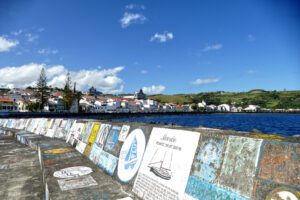
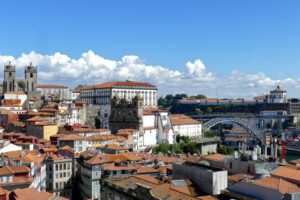
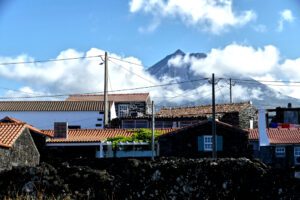


Your blog has helped me become a better solo traveler. Your words have inspired and encouraged me to take the first step. Thank you for that.
Thank you for your feedback – I’m glad to read that! Safe travels!